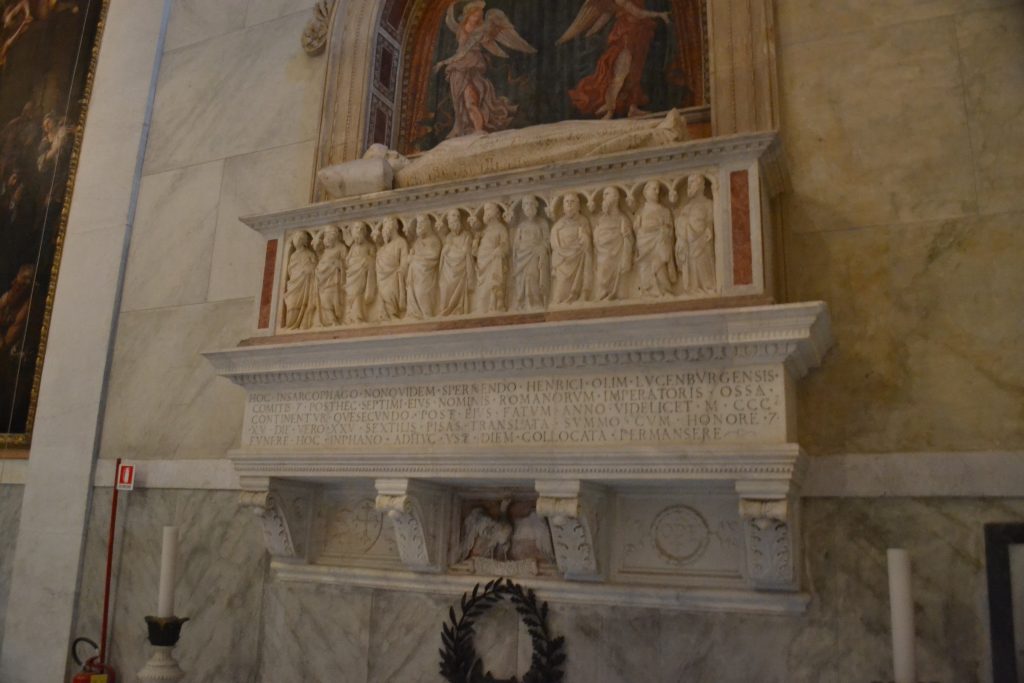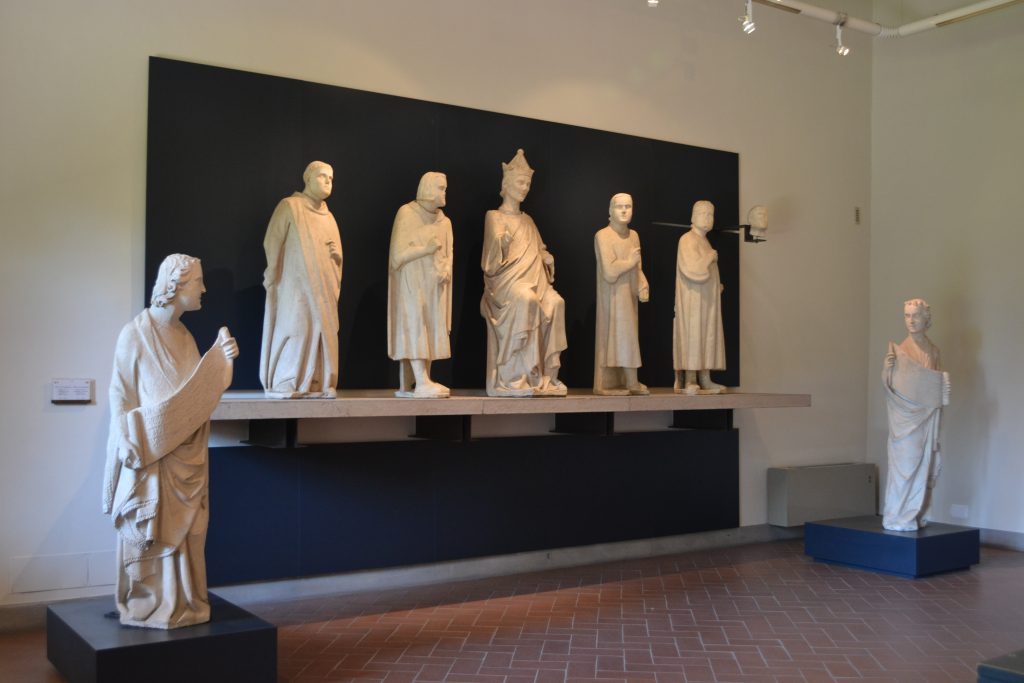By Alexandra Dodson
Holy Roman Emperor Henry VII died on August 24, 1313, in Buonconvento, near Siena. He had reigned as emperor for barely a year, a year wrought with continued controversy between the Guelphs and Ghibellines. The son of Count Henry VI of Luxembourg, Henry was born in 1275 and raised at the French court. He became king of Germany in 1308, and shortly thereafter announced that he would be crowned Holy Roman Emperor in Rome. He arrived in Italy in 1310, proclaiming to be on a mission of peace and was heralded by many, including Dante, who in Pardiso 30 described him as “He who came to reform Italy before she was ready for it ”[ch’a drizzare Italia verrà in prima ch’ella sia disposta].
Henry was finally crowned Holy Roman Emperor at the Lateran Basilica in 1312. During his brief reign, Henry’s authority as emperor was repeatedly challenged by King Robert of Naples and Guelph forces throughout the Italian peninsula. Henry eventually charged Robert with treason and prepared to attack Guelph strongholds, before catching malaria in August of 1313 and dying shortly thereafter.
Henry’s body was returned to Pisa, where Sienese sculpture Tino di Camaino, then capomaestro of the Pisa Duomo, was contracted to carve a monumental tomb for the emperor. Tino had completed a previous tomb for the Duomo, that of San Ranierus, between 1301-1306, but his tomb design for Henry took on dramatic new proportions. Henry’s tomb was originally installed behind the cathedral’s high altar, and included its own altar dedicated to St. Bartholomew, on whose feast day Henry had died. Such a prominent position, unusual for a tomb monument, was indicative of the deep loyalty of the Pisans to the imperial cause.
The precise original configuration of the tomb is unknown, as the majority of the components are today divided between the south transept of the Duomo and the adjacent Museo dell’Opera. Yet an analysis of the surviving fragments reveals an imposing monument that would have been read as a powerful imperial statement in a major Ghibelline stronghold. The tomb was comprised of numerous components, among them a sarcophagus carved with images of the 12 apostles underneath a recumbent effigy, a figure of Henry enthroned, flanked by counselors (among them the podesta of Pisa), a Madonna and Child, and a figure of St. Bartholomew. Above the seated figure of Henry was a mosaic depicting the Christ Pantocrator, as if blessing the emperor. The tomb can thus be interpreted as Ghibelline propaganda, referencing divine authority bestowed upon the emperor. A further imperial reference can be made by a comparison of the enthroned sculpture of Henry to one of Frederick II, the previous Holy Roman Emperor, carved for the Gate at Capua some 75 years earlier.

© All rights reserved
The statuary of the tomb was original painted, evidenced by surviving traces of polychromy, and documentation of the labor of six painters who worked for 45 days on the monument (White 439). Indicative of contemporary political fragility, Tino di Camaino left Pisa before the completion of the tomb project, probably due to political tensions mounting before the battle of Montecatini, where Tino would fight against the Ghibellines and was ultimately deposed as capomaestro of the Duomo. Surviving today in the Duomo are the sarcophagus and effigy, mounted above an inscription from 1494, when the tomb was placed in the chapel of San Ranierus. The enthroned figure of Henry, along with the flanking advisors, is today in the Museo dell’Opera.

© All rights reserved
Selected Bibliography
Bowsky, William. Henry VII in Italy: the conflict of empire. Lincoln, University of Nebraska Press, 1960.
Calderoni Masetti, Anna Rosa. “Per il monument funebre di Arrigo VII nel duomo di Pisa. In Le vie del medioevo, 2000, 374-387.
Carli, Enzo. Gli scultori senesi. Milano: Electa, 1980.
Carli, Enzo. Tino di Camaino, Scultore. Florence: Le Monnier, 1934.
Cassidy, Brendan. “Artists and Diplomacy in Late Medieval Tuscany: The Case of Giotto, Simone Martini, Andrea Pisano, and Others.” In Gesta, Vol. 51, No. 2 (2012), pp. 91-110.
Dombrowski, Damian. “Das Grabdenkmal Heinrichs VII in der Ausstattung der Pisaner Domapsis.” In Docta Manus: Studien zur italienischen Skulptur fur Joachim Poeschke. Munster: Rhema-Verlag, 2007.
Kreytenberg, Gert. Das Grabmal von Kaiser Heinrich VII in Pisa. In Mitteilungen des Kunsthistorishes Institut in Florenz, Vo. 28, Issue 1 (1984), 33-64.
Moskowitz, Anita. Italian Gothic Sculpture c. 1250-1400. Cambridge: Cambridge University Press, 2001.
Nenci, Cinzia. “Palia cum armis Domini Imperatoris: le stoffe del sepolcro di Arrigo VII di Lussemburgo nel Duomo di Pisa. Polittico, 2000, 7-20.
Pope-Hennessy, John. Italian Gothic Sculpture. London: Phaidon, 1996.
Valentiner, W.R. Tino di Camaino. Paris: The Pegasus Press, 1937.
White, John. Art and Architecture in Italy, 1250 to 1400. New Haven and London: Yale University Press, 1993.